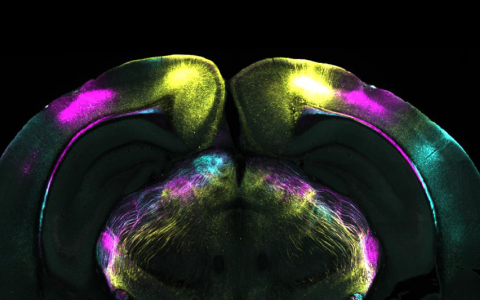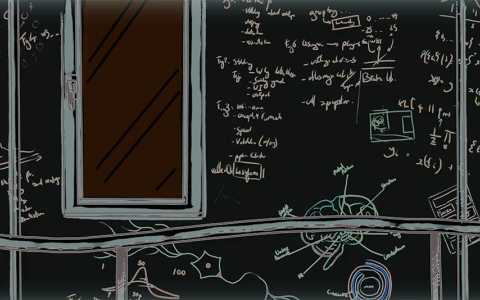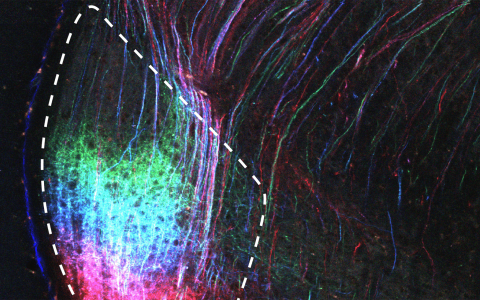
NEURAL CIRCUITS FOR SENSORY PROCESSING AND SENSORY-GUIDED BEHAVIOURS
Hofer Lab
Research Area
How we interpret and react to our environment not only depends on the current sensory information we receive through our sense organs, but also on our previous experience, knowledge of the world and internal mental state.
The goal of the Hofer lab is to understand the neural basis of sensory perception and sensory-guided decision making. We study how the brain processes visual information, and how distributed neural networks interact to integrate visual signals with other information in order to represent and interpret the outside world. Moreover, we aim to reveal how sensory evidence, previous knowledge and behavioural state together influence behaviour to generate flexible reactions to environmental challenges and to guide decisions on how to interact with environmental resources.
To study these questions, we use a wide range of multi-disciplinary methods: in vivo two-photon imaging and other imaging approaches, high-density acute and chronic electrophysiological recordings (such as next-generation Neuropixels technology), a large array of behavioural tasks and circuit modelling, together with molecular and genetic approaches to identify different cell types, record and manipulate their function and trace specific pathways.
All animal behaviour arises from computations in large-scale neural networks involving many different brain areas. Deciphering the computations underlying brain function therefore crucially relies on understanding how brain areas communicate and work together to mediate behaviour. We thus aim to look beyond individual brain areas and study interactions between distributed brain regions including cerebral cortex, thalamus, basal ganglia and brain stem circuits.
Research Topics
Predictive Processing in Sensory Networks of the Neocortex and Thalamus
The brain functions as a prediction machine, utilizing an internal model of the world to anticipate sensations and the outcomes of our actions. Discrepancies between expected and actual events, referred to as prediction errors, are leveraged to update internal models and guide our attention towards unexpected events. Despite the importance of predictions and prediction error signals for various neural computations across the brain, surprisingly little is known about the neural circuit mechanisms responsible for their implementation. Our research aims to answer fundamental questions such as: How does the brain build internal models of the world to make predictions that influence perception? How are internal models updated by learning new information? Where and how are different types of sensory prediction error computed and how are they utilized by the brain?
Flexible Control of Behaviour: Fear and Anxiety
Fear is a healthy reaction in certain situations, keeping us safe and allowing us to evaluate if particular sensory stimuli, actions or environments are dangerous. Healthy individuals can regulate their fear responses and utilize them for productive adaptive actions. Indeed, producing flexible behavioural responses to changing environmental demands, in general, is one of the remarkable abilities of the mammalian brain. Animals can react differently to the same sensory information, for instance to escape from or investigate a potential threat, depending on the behavioural context and their prior knowledge. We are studying neural pathways, for instance via the ventral lateral geniculate nucleus, that can mediate flexible control over fear responses and anxiety-related behaviour, and how these pathways integrate sensory and other information to allow flexible behaviour, for instance when deciding whether to prioritize exploration of a new environment or staying safe from potential predators. We are also interested in the brain processes causing pathological dysregulation of fear circuits in fear-related and anxiety disorders, and how regulatory control pathways in the brain could be utilized for treatments for these disorders.
Flexible Control of Behaviour: Foraging and Explore/Exploit Decisions
Humans and animals are remarkably flexible in adapting their goals in response to changing needs and environmental conditions. They constantly weigh up whether to persist in pursuing a certain goal, to give up or to explore an alternative plan of action. In reinforcement learning this balance is formalized in the explore/exploit dilemma, in which foraging agents need to choose whether to keep exploiting known resources for immediate gain or explore new resources and thus acquire novel information, important for future gains. Experimental and theoretical neuroscience studies have often focused on value calculations and optimal decision strategies during explore/exploit trade-offs and the representation of these computations in the prefrontal cortex (PFC). However, balancing exploitatory and exploratory behaviours is crucial for the survival of most animals, arguing for evolutionarily conserved, sub-neocortical brain mechanisms for their implementation. We are studying the subcortical circuits mediating the maintenance of exploitatory, exploratory and disengaged behavioural states and how animals switch between them, including the median raphe nucleus, lateral habenula, hypothalamus and other brain areas, and how they interact with neocortical regions such as PFC to enable flexible and adaptive behaviour.














